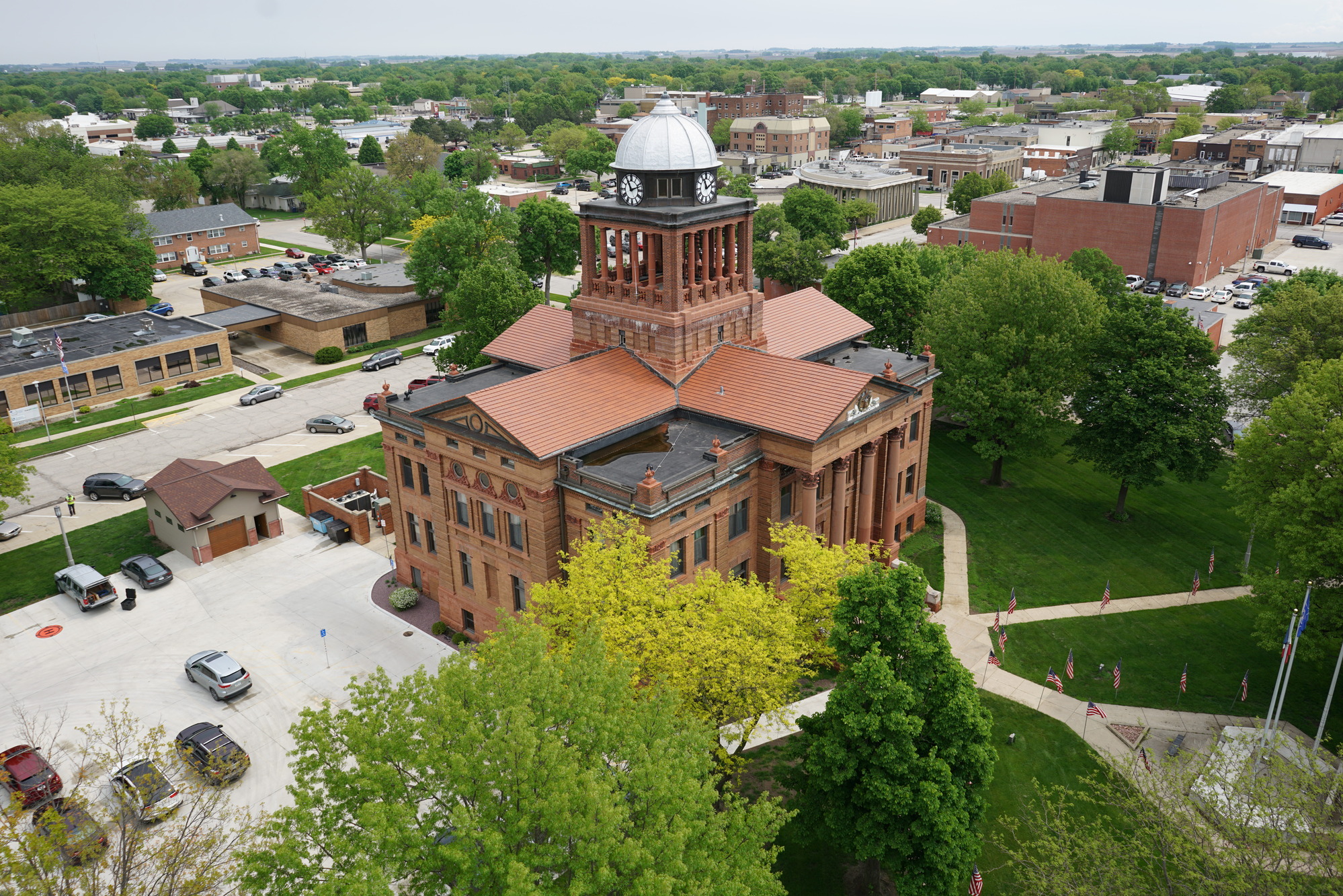Clean Air Meets Creative Design
Modern, mechanical design at the ISG Des Moines office
The quality of air we breathe is connected to the quality of life that we live. Indoor air quality is especially important, as it is directly correlated to one’s health, wellness, and ability to perform. In the past few years, there has been an emphasis on air quality enhancements for employers and engineers to develop solutions to create safer, cleaner environmental spaces. In honor of Air Quality Week, ISG gives kudos to the mechanical team for their commitment to being clean air advocates.
When ISG acquired the historic Des Moines Global Hoist space for their new office, ISG’s engineering experts were excited and eager to showcase the mechanical system and match the uniquely designed space. The building, constructed at the turn of the previous century, has an industrial feel with exposed structures, an open-concept layout, and extremely large, single-pane framed steel windows. Private and open offices, collaboration spaces, and meeting rooms are spread throughout the first floor and the mezzanines. The office layout allows for open air movement and natural sunlight distribution throughout the space. The perimeter mezzanines create the challenge and the need for independent air bubbles of fresh air and comfort. ISG prioritized the mechanical system layout to intentionally, strategically rout exposed ductwork and system components to act as a showroom display for clients and teach them how an enhanced air distribution and quality system is designed.
Quality Solutions
Providing clean air to the space starts with thoughtful design and application of the right HVAC system. One, large air handling unit (AHU) with an energy recovery unit (ERV) serves the entirety of the building and delivers the following benefits.
- It recirculates, scrubs air, and delivers fresh, outside air evenly to all interior spaces.
- A dry steam generator within the mechanical system keeps humidification within the recommended ranges, which reduces exposure to airborne sickness—a common challenge in the drier, colder Midwest climate.
- Additionally, humidifying the space at recommended levels can affect air borne illness transmission. Studies suggest:
- Higher humidity can enhance the body’s ability to fight off infection
- Infected particles can travel farther and in greater numbers in spaces with dry air
Clean Air Methods
ISG incorporated modern air cleaning strategies into the HVAC system design. Fresh, outside air and circulated, return air travels through two air filters (MERV 8 and MERV 15) within the AHU unit. The filters are efficient in trapping most particles that can be detrimental to one’s health, thus eliminating them from the air. The cooling coil inside the AHU has the potential to be a breeding ground for bacteria so it requires frequent cleaning to enhance coil efficiency. To reduce the need for labor, ultraviolet (UV) light sanitation was incorporated to keep bacteria from forming, building up, and passed through the air system. The final cleaning phase comes from bi-polar ionization filters placed inside the supply air ductwork downstream of the fan and before distribution to the space. Bi-polar ionization generates particles that attach themselves to infected air particles, causing them to become ineffective. These combined solutions are energy efficient and save on resources when compared to traditional, manual cleaning methods. Physical, pleated filters, ultraviolet lights, and bi-polar ionization are many of the enhanced methods proven to generate cleaner, higher quality air.
Clean Space Methods
Beyond the collaboration and main spaces, ISG incorporated clean space methods within the kitchen and restrooms. Throughout the industry, designers and clients are opting for single occupancy restrooms verses traditional, multi-occupancy styles to minimize person-to-person contact, surface contact, and provide more efficient air circulation methods. Air circulation is improved with strategically placed supply and exhaust grilles in each room. In addition to touchless fixtures in the kitchen and restrooms, the lavatories are equipped with an all-in-one handwashing station with touchless soap, washing, and drying.
To stand apart from traditional mechanical design methods, ISG designed the mechanical system to be more energy efficient and save space, while incorporating modern technology and design methods developed from years of research. To see these innovations for yourself, the Des Moines office offers tours and will soon have QR codes placed throughout the building for individuals to learn more.



Related Articles

.webp)
Navigating the MS4 Permit Program: How ISG Supports Communities Every Step of the Way
The management of stormwater runoff is a pressing concern for cities across the nation, and the Municipal Separate Storm Sewer System (MS4) permit program is a critical framework designed to protect water quality and our natural resources.


Optimize Maintenance + Reveal Opportunities with Facilities Assessments
The Clay County Board of Supervisors (County) knew they needed to address facility repairs in their Administration Building, Courthouse, and General Services Center. While maintaining public buildings does not generate excitement, County leaders recognized that deferring upkeep of public facilities can cost more in the long run if left unaddressed and may result in limiting other more impactful projects.

Creating Flood-Resilient Communities: A Case Study in Floodplain Management
In the land of 10,000 lakes, Minnesotans love to live near and play in our abundant water systems. But the effects of population growth, land use development, and climate change pose challenges within floodplain areas, contributing to persistent flooding issues.


Why a Phase 1 Environmental Site Assessment is Critical to Project Success
In the world of real estate development and land acquisition, the road to success is paved with thorough planning and attention to detail. One often overlooked but crucial step in the due diligence process is the Phase 1 Environmental Site Assessment (ESA). Before a client begins any project, ISG often conducts a Phase 1 ESA to identify any recognized environmental conditions (RECs) that could impact the property's value or pose potential risks to public health and the environment. The result of the assessment influences the project’s direction and success long-term.


.svg)




